|
CRABS
ABOUT -
HOME - WHALING
- A-Z INDEX
Anchovies
| Bass
| Bream
| Catfish
| Clams
| Cod
Coley
| Crabs
| Crayfish
| Eels
| Grouper
| Haddock
| Hake
| Halibut
| Herring
| Jellyfish
Krill
| Lobster
| Mackerel
| Marlin
| Monkfish
| Mullet
| Mussels
| Oysters
| Perch
| Piranha |
Plaice
| Pollock
| Prawns
| Rays
| Sablefish
| Salmon
Sardines
| Scallops
| Sharks
| Shrimp
| Skate
| Sole
| Sprat
| Squid
| Sturgeon
| Swordfish
| Trout
| Tuna
| Turbot
| Whiting
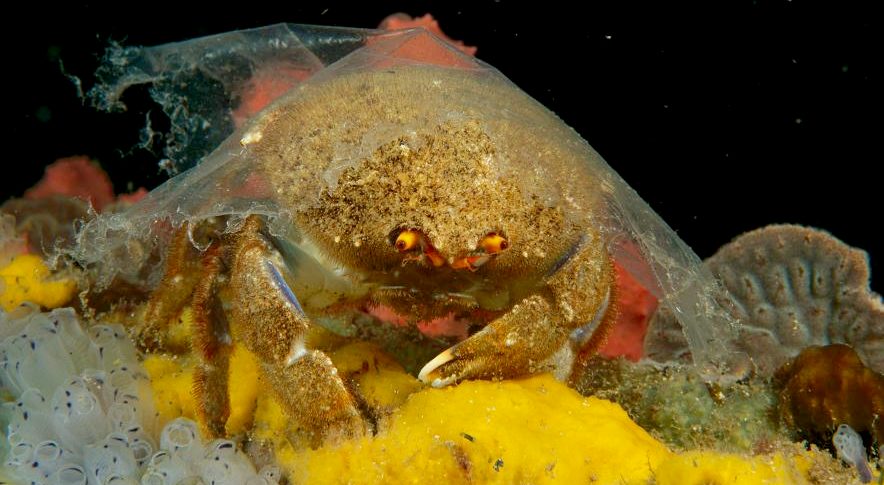
PLASTICA
- Crabs live in an environment surrounded by plastic in the
form of film wrappings and micro particles. It's no place to
bring up healthy siblings.
In
an effort to feed a
growing population we should look at
alternatives lower down the food chain to increase the ratio
at which protein is harvested from the ocean, so bypassing the
conventional food chain where at each stage of consumption
there are significant losses in the conversion process. Jellyfish,
squid, krill
and filter feeders such a mussels could play a part in filling the widening gap between falling
fish stocks and higher demand to feed humans - so
relieving the pressure on tuna, salmon and other popular white
fish like cod.
We
must also think about conserving the ocean environment to
protect existing resources that we take for granted, and that
we expect that our world leaders are helping to conserve. They
are, but as we write their efforts are focused on reducing
plastic use on land in the hope of stemming the 8 millions
tons a year that finds its way into the seven seas. We are
grateful for their efforts but we would urge the G20
and United
Nations members to work toward a more comprehensive solution.
With
an increasing population all that will do is keep pace with
the current input. What we'd like to see is a dual pronged
attack to include efforts to capture plastic that is in the
ocean. Our foundation is the only organisation in the world
(as far as we know) that is looking at ways of capturing micro
plastic. The only way to develop SeaVax
like technology is if we have the funds to continue with our
research and to continue to inform as to progress.
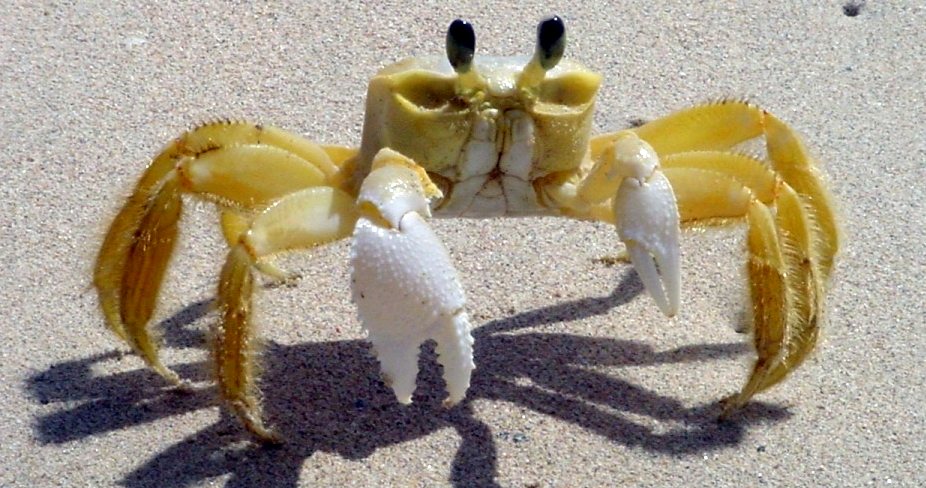
ABOUT
CRABS
If
you have not yet eaten crab, you are in for a treat. Crab meat
is one of the most exotic of the shellfish family, with
lobster meat being perhaps one step up the ladder. Fresh
dressed crab is our favourite, available only during the
season.
The
one major drawback with all seafood at the moment is the
plastic menace, with biomagnification
becoming a major issue that nobody knew about, but now the
newspapers are full of stories about how much plastic
is in shellfish.
Crabs are generally covered with a thick exoskeleton, composed primarily of highly mineralized chitin, and armed with a single pair of chelae (claws). Crabs are found in all of the world's oceans, while many crabs live in fresh water and on land, particularly in tropical regions. Crabs vary in size from the pea crab, a few millimetres wide, to the
Japanese spider crab, with a leg span of up to 4 metres (13 ft).
About 850 species of crab are freshwater, terrestrial or semi-terrestrial species; they are found throughout the world's tropical and semi-tropical regions. They were previously thought to be a monophyletic group, but are now believed to represent at least two distinct lineages, one in the Old World and one in the New World.
The earliest unambiguous crab fossils date from the Jurassic, although Carboniferous Imocaris, known only from its carapace, may be a primitive crab. The radiation of crabs in the Cretaceous and afterward may be linked either to the break-up of Gondwana or to the concurrent radiation of bony fish, crabs' main predators.
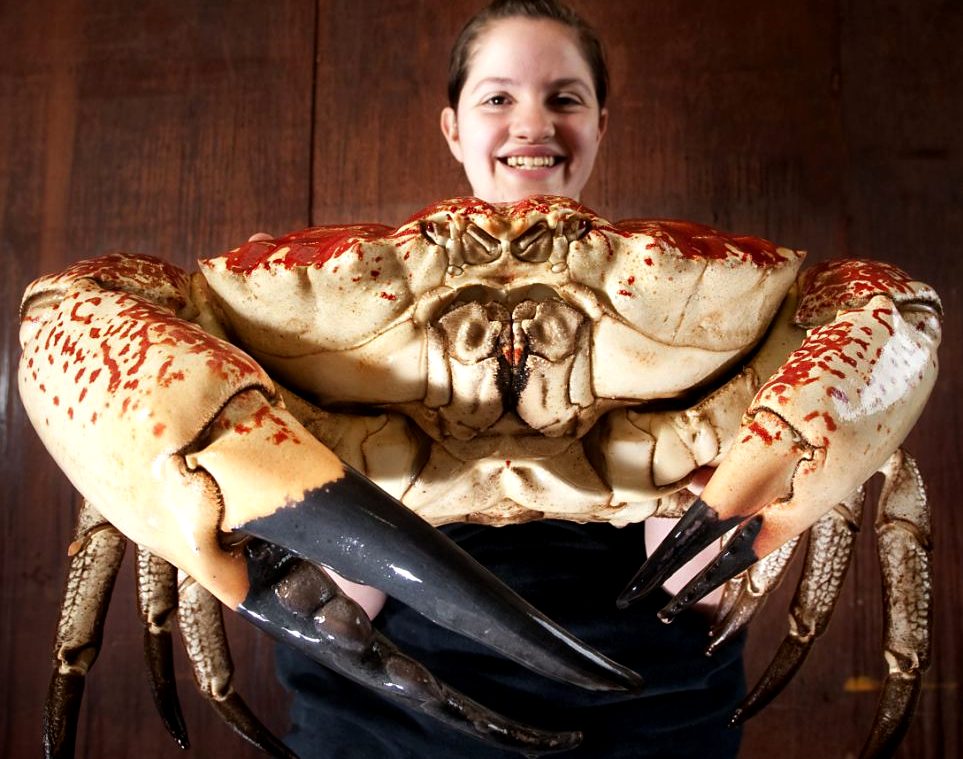
DAILY
MAIL 30 APRIL 2012 - He was destined for the pot – if they had found one big enough to fit.
But Claude the Tasmanian giant crab was saved from death when the fisherman who caught him sold him to a British aquarium for £3,000.
Now, after a 29-hour plane journey from Australia – where giant crab meat is a delicacy – and two weeks in quarantine, Claude is ready to meet his public.
He is the biggest crab on display in the UK and weighs a mighty 15lb with a 15-inch shell – enough to make 160 crab cakes.
Claude is 100 times bigger than a standard UK shore crab. Yet he is still a juvenile and will grow to double his weight.
Claude was caught off the coast of Tasmania last month, but was sold to the Sea Life group along with two other Tasmanian giant crabs.
He will go on display at the Sea Life centre in Weymouth, Dorset, on Thursday, and his two companions will be moved to other centres in Birmingham and Berlin if Claude responds well to his new home.
Currently he is being kept on his own in a specially made cylindrical tank, ten feet tall and six feet wide, but the aquarium will introduce some coldwater fish once he is settled.
In the wild, crabs eat any dead or dying matter they find on the seabed but Claude is currently dining on diced mackerel and squid and is reportedly very happy with his gourmet diet.
Rob Hicks, head marine biologist for Sea Life, said: ‘They are such impressive creatures we thought that it was worth the cost and effort of flying them halfway round the world so they can flourish in an aquarium display.
‘They had a stopover in Hong Kong and arrived with us two weeks ago. It took them a few days to get over the jet-lag but now they’re feeding happily and don’t seem any the worse for their trip.’
Jemma Battrick, aquarist at Weymouth Sea Life said: 'When I found out we were getting the crabs in I was really excited.
'We already have a tank here for them so it will be easy to move them in, and they will go on display straight away.
'The crabs don’t eat very much despite being one of the largest species and they will feed on shrimp, prawns, and squid when they are here.
'We want to increase their numbers but in Australia people eat them and I think visitors to the Sea Life will be shocked when they find that out because they look so magnificent.'
By Jill Reilly and Emily Andrews
BEHAVIOUR
Crabs typically walk sideways (a behaviour which gives us the word crabwise), because of the articulation of the legs which makes a sidelong gait more efficient. However, some crabs walk forwards or backwards, including raninids, Libinia emarginata and Mictyris platycheles. Some crabs, notably the Portunidae and Matutidae, are also capable of swimming, the Portunidae especially so as their last pair of walking legs is flattened into swimming paddles.
Crabs are mostly active animals with complex behaviour patterns. They can communicate by drumming or waving their pincers. Crabs tend to be aggressive towards one another, and males often fight to gain access to females. On rocky seashores, where nearly all caves and crevices are occupied, crabs may also fight over hiding holes. Fiddler crabs (genus Uca) dig burrows in sand or mud, which they use for resting, hiding, and mating, and to defend against intruders.
Crabs are omnivores, feeding primarily on algae, and taking any other
food, including molluscs, worms, other crustaceans, fungi, bacteria and detritus, depending on their availability and the crab species. For many crabs, a mixed diet of plant and animal matter results in the fastest growth and greatest fitness. However, some species are more specialised in their diets. Some eat
plankton, some eat primarily shellfish like clams, and some even catch fish.
Crabs are known to work together to provide food and protection for their family, and during mating season to find a comfortable spot for the female to release her eggs.
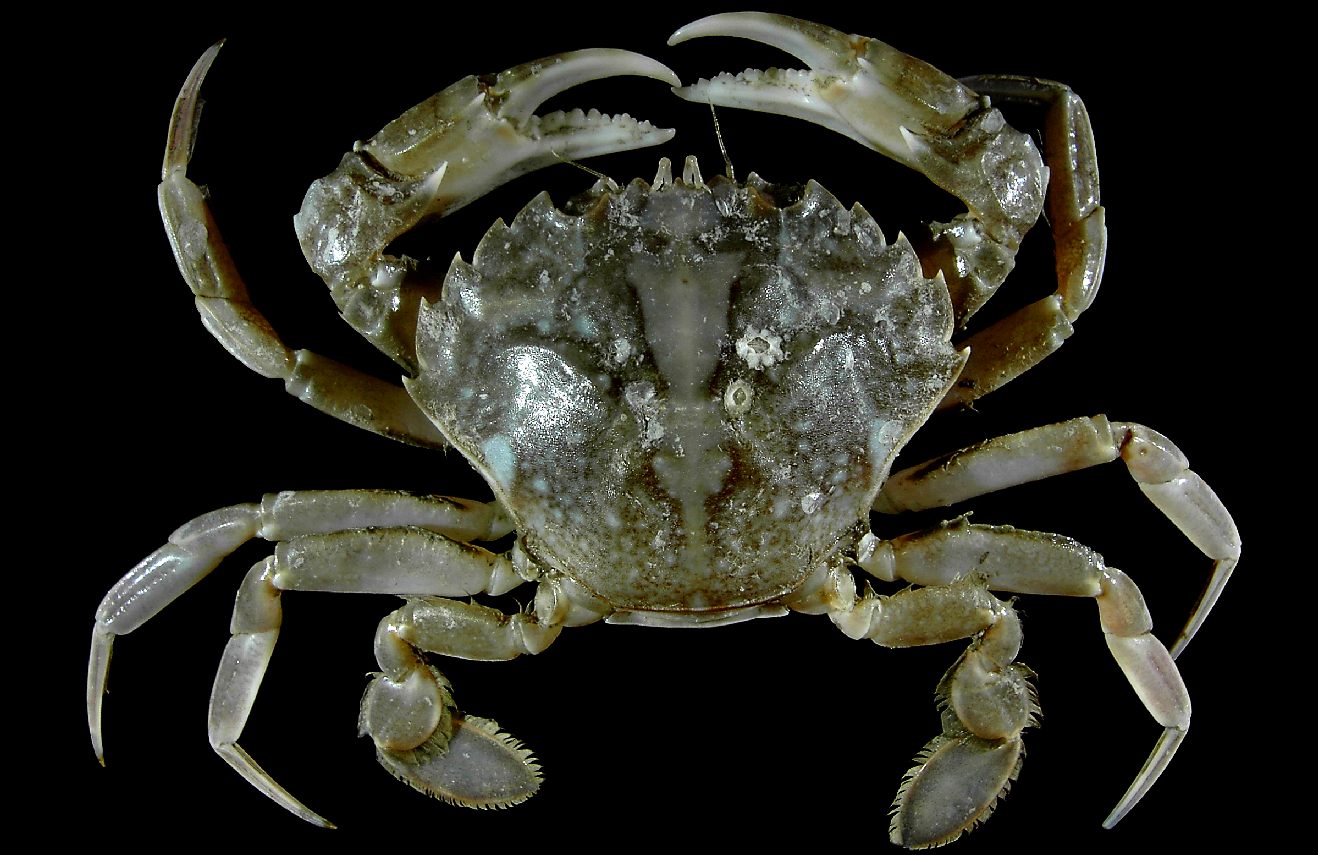
HUMAN
CONSUMPTION
Crabs make up 20% of all marine crustaceans caught, farmed, and consumed worldwide, amounting to 1.5 million tonnes annually. One species, Portunus trituberculatus, accounts for one-fifth of that total. Other commercially important taxa include Portunus pelagicus, several species in the genus Chionoecetes, the blue crab (Callinectes sapidus), Charybdis spp., Cancer pagurus, the
Dungeness crab (Metacarcinus magister), and Scylla serrata, each of which yields more than 20,000 tonnes annually.
In some species, crab meat is harvested by manually twisting and pulling off one or both claws and returning the live crab to the
water in the belief the crab will survive and regenerate the claws, thereby making it a sustainable industry.
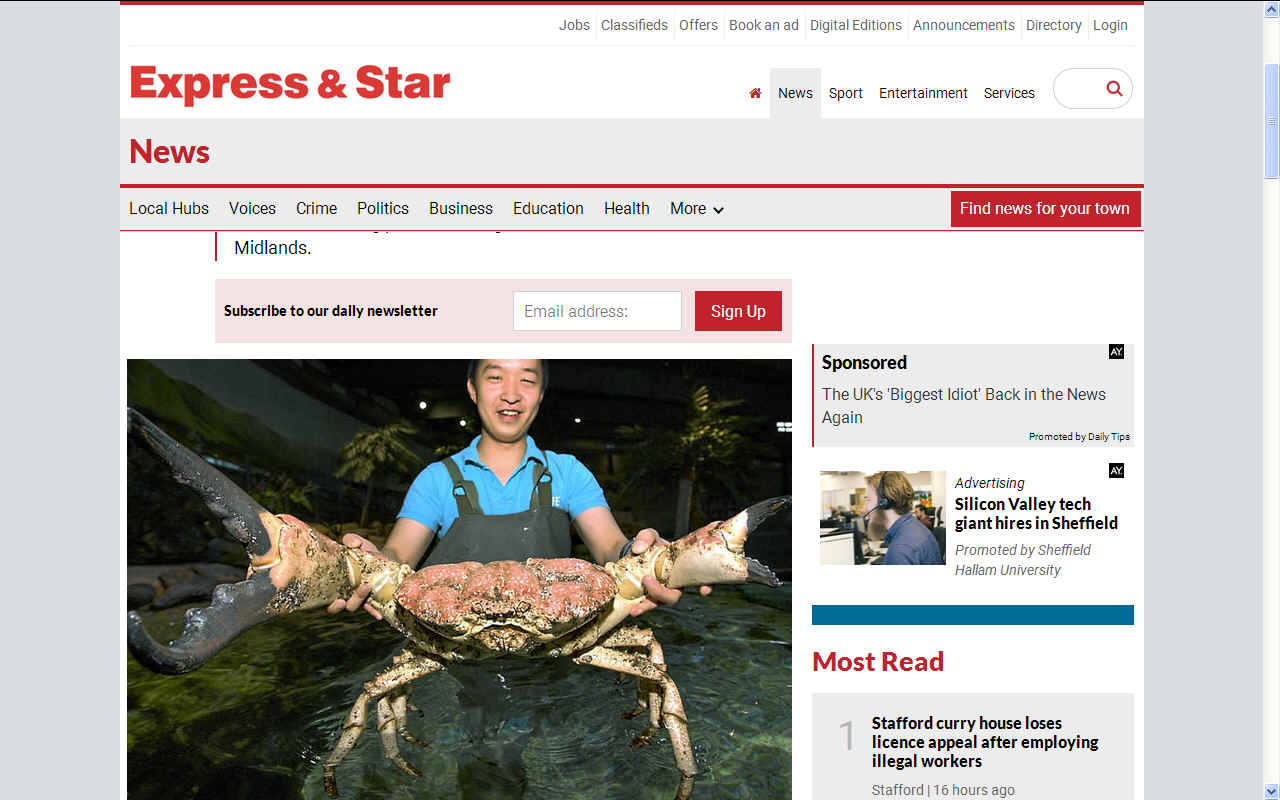
EXPRESS
& STAR 18 OCT 2012 - A giant Tasmanian king crab has had a lucky escape from an Australian cooking pot and been given a new home in the West Midlands.
The 18lb monster crab, named Russell after feisty Aussie actor Russell Crowe thanks to his gladiator-style suit of armour and no-nonsense attitude, will now live at the Sea Life Centre in Birmingham after being saved from the dinner table.
Fished from the deep waters off southern Australia, he and two more of his kind were destined for market, and probably the barbecue, until a Sea Life scout spotted them and struck a deal with the fishermen.
The three were flown to the UK at a cost of £3,000 each, and delivered to Sea Life's centre in Weymouth, Dorset.
Until now Russell has been twiddling his giant claws and growing steadily bigger in a behind-the-scenes quarantine tank.
Jamie Turner, from Birmingham's Sea Life, said: "We thought it was time Russell was unveiled to an admiring public."
Tasmanian king crabs are the second biggest species in terms of body mass, in the world and Russell could double in size.
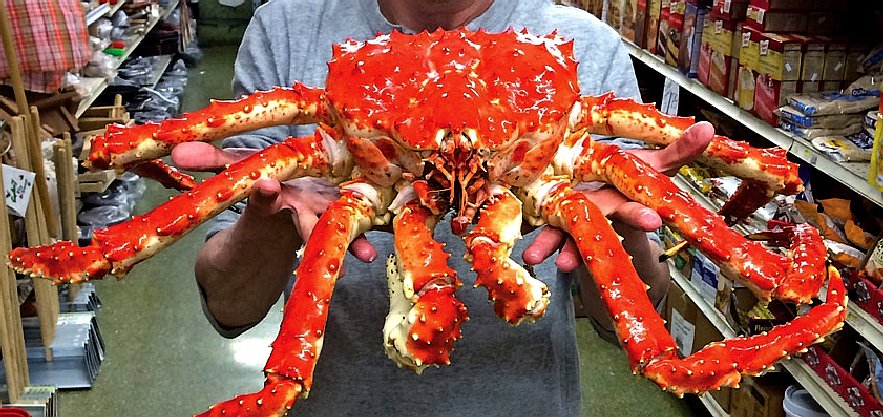
CRAB DISHES
Crabs are prepared and eaten as a dish in many different ways all over the world. Some species are eaten whole, including the shell, such as soft-shell crab; with other species, just the claws or legs are eaten. The latter is particularly common for larger crabs, such as the snow crab. In many cultures the roe of the female crab is also eaten, which usually appears orange or yellow in fertile crabs. This is popular in Southeast Asian cultures, some
Mediterranean and Northern
European cultures, as well as on the Eastern, Chesapeake and Southern coasts of the
United
States.
In some regions, spices improve the culinary experience. In Southeast Asia and Indosphere, masala crab and chilli crab are examples of heavily spiced dishes. In the Chesapeake Bay region, blue crab is often steamed with Old Bay Seasoning. Alaskan king crab or snow crab legs are usually simply boiled and served with garlic or lemon butter.
For the British dish dressed crab, the crab meat is extracted and placed inside the hard shell. One American way to prepare crab meat is by extracting it and adding varying amounts of binders, such as egg white, cracker meal, mayonnaise or mustard, creating a crab cake. Crabs can also be made into a bisque, a global dish of
French origin which in its authentic form includes in the broth the pulverized shells of the shellfish from which it is made.
Imitation crab, also called Surimi, is made from minced fish meat that is crafted and colored to resemble crab meat. While it is sometimes disdained among some elements of the culinary industry as an unacceptably low-quality substitute for real crab, this does not hinder its popularity, especially as a sushi ingredient in Japan and
South
Korea, and in home cooking, where cost is often a chief
concern. Indeed, surimi is an extremely important source of protein in most East and Southeast Asian cultures, appearing in staple ingredients such as fish balls and fish cake.
LINKS
& REFERENCE
https://www.expressandstar.com/news/2012/10/18/giant-tasmanian-king-crab-gets-claws-into-birmingham-sea-life-centre/
https://www.dailymail.co.uk/news/article-2137356/Monster-Tasmanian-King-Crabs-saved-pot-shipped-Britain-aquarium-display.html
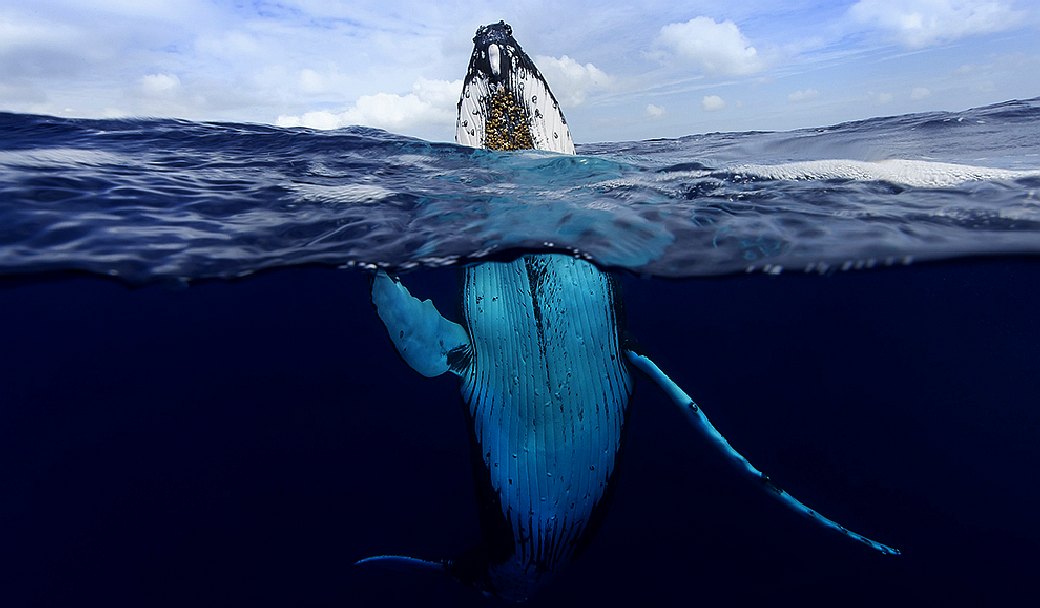
MARINE
LIFE - This humpback whale is one example of a magnificent
animal that is at the mercy of human
activity. Humans are for the most part unaware of the harm their fast-lane
lifestyles are causing. We aim to change that by doing all we
can to promote ocean
literacy.
Anchovies
| Bass
| Bream
| Catfish
| Clams
| Cod
Coley
| Crabs
| Crayfish
| Eels
| Grouper
| Haddock
| Hake
| Halibut
| Herring
| Jellyfish
Krill
| Lobster
| Mackerel
| Marlin
| Monkfish
| Mullet
| Mussels
| Oysters
| Perch
| Plaice
| Pollock
| Prawns
| Rays
| Sablefish
| Salmon
Sardines
| Scallops
| Sharks
| Shrimp
| Skate
| Sole
| Sprat
| Squid
| Sturgeon
| Swordfish
| Trout
| Tuna
| Turbot
| Whiting
This
website is provided on a free basis as a public information
service. Copyright © Cleaner
Oceans Foundation Ltd (COFL) (Company No: 4674774)
2022. Solar
Studios, BN271RF, United Kingdom.
COFL
is a charity without share capital.
|






